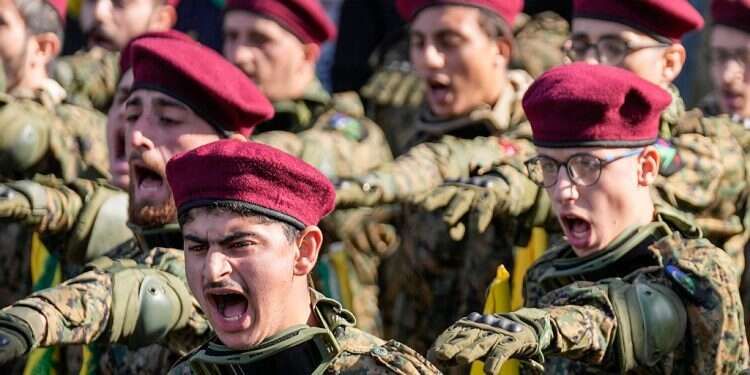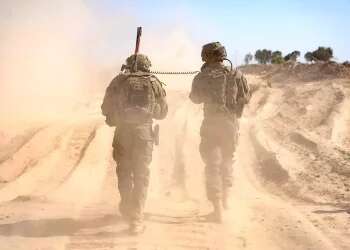The northern front saw one of the most intense days of fighting on Tuesday since the beginning of the war three months ago.
Hezbollah fired dozens of armed drones as well as rockets and anti-tank missiles towards several targets in the north from the morning onwards and even managed to hit the Northern Command headquarters in Safed.
Follow Israel Hayom on Facebook, Twitter, and Instagram
This was Hezbollah's second attempt to strike a strategic target in the north, after the attack on the air monitoring base in Meron. Unlike the first attack, which caused damage, the air defense system managed to intercept most of the vehicles aimed at the Northern Command, and the damage there was minor.
The escalation in Hezbollah's activity is a direct result of assassinations attributed to Israel. While the strike in Meron was carried out in response to the assassination of senior Hamas official Salah al-Arouri last week, yesterday morning's attack was carried out following the assassination of the new commander of the Radwan forces, Wissam al-Tawil, who was close to Hassan Nasrallah and a confidant of the former Iranian Quds Force commander Qasem Soleimani. Later, Ali Hussein Burji, who was the commander of Hezbollah's drone unit in southern Lebanon, was also assassinated, and it appears that his men continued the launches to avenge his death.
The IDF took advantage of these attacks to escalate its responses. Alongside striking Hezbollah's commands and infrastructure along the border and in the Shiite villages of southern Lebanon, strategic targets north of the Litani River were also attacked, including surface-to-air missile batteries and additional weapons. However, Israel is careful not to act with too much force, which would compel Hezbollah to respond in a way that could drag the sides into an all-out war.
Video: Six facts about the Israel-Hamas war in 90 seconds / X/@idf
Israel and Hezbollah have overlapping interests in the short term and conflicting ones in the long term. At this time, both sides are careful to keep the conflict along the border rather than have it expand. Hezbollah is doing its part in joining the war in solidarity with Hamas but without being dragged into a war that would wreak havoc on Lebanon and its residents. Israel has managed to fight in the north without having it divert its main focus from the Gaza fight.
This situation also serves Hezbollah in the long run. It pays a price in infrastructure and personnel (about 150 of its fighters have been killed so far), but this is nothing more than a temporary setback that could be undone in a relatively short time, and certainly does not represent a change in the equation on the northern border. Israel, on the other hand, has a problem, because it promised northern residents that they would return home only after the threat of Radwan forces on the border was removed – something that is not currently on the horizon.
This threat can be removed in one of two ways – diplomatically or militarily. The Americans are pushing for an agreement to prevent war, and Israel is allowing them to conduct talks on the issue to gain legitimacy for a future war. Still, even if such an agreement is reached, it is doubtful that Hezbollah will honor it after it has already grossly violated UN Security Council Resolution 1701, which was achieved after the Second Lebanon War.
As is customary, the Israeli leadership does not share its plans with the public, but the reasonable outline seems to be that some kind of understanding with Hezbollah will be reached that will bring calm to the border area, after which the residents could return. The IDF will remain in the area in very large forces to ensure that an attack like October 7 will not take place in the north, but the threat itself currently seems far from being removed.
Subscribe to Israel Hayom's daily newsletter and never miss our top stories!




